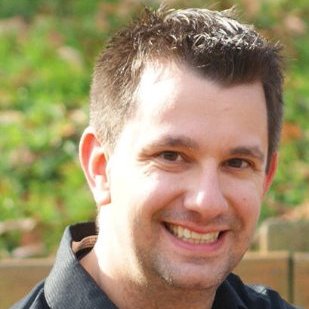 Timothy D. Brett, P.E., M.ASCE is one of five winners of the 2014 Edmund Friedman Young Engineer Award for Professional Achievement. Tim received his award on October 9, 2014, at the ASCE Global Engineering Conference held in Panama City, Panama.
Timothy D. Brett, P.E., M.ASCE is one of five winners of the 2014 Edmund Friedman Young Engineer Award for Professional Achievement. Tim received his award on October 9, 2014, at the ASCE Global Engineering Conference held in Panama City, Panama.
Timothy D. Brett, P.E. holds a Bachelor’s degree in Environmental Systems Engineering from the Pennsylvania State University, and is currently a Project Engineer with Leopold, a Xylem brand located in Zelienople, PA. Tim has over 12 years of experience mostly related to the water/wastewater industry in western PA. Most notable accomplishments include:
- Development of Wet Weather Plans, Long-Term Control Plans, and Act 537 Plans
- Hydraulic and Hydrologic modeling of sewer systems including the ALCOSAN Upper Monongahela Planning Basin wet weather facilities plan,
- Development of Feasibility Studies for a member of the 3RWW PM Team and various clients in Allegheny County for compliance with the Health Department’s Administrative Consent Order,
- Involvement in the Feasibility Study Working Group, Complex Sewershed analysis and Green Infrastructure analysis
Tim took some time to discuss the being an award winner and being a civil engineer in Pittsburgh:
Question: How do you feel about winning the award?
Initially I was completely surprised when I received notification that I had won. I never imagined winning such a prestigious award. Even now it is still had to believe.
Question: What was it like to receive your award in Panama City, Panama?
I was very fortunate to win the award in 2014 since the award ceremony was held in Panama City, Panama. That afforded me the opportunity to travel to a country that I probably would have never visited otherwise and get to learn about and tour one of the greatest civil engineering feats ever, the Panama Canal. It was amazing learning about the history and effort that went into building the canal 100 years ago; the head engineer that was in charge got his experience working on the locks and dams on the Ohio River. One of the most interesting facts that I learned was that the biggest obstacle in building the canal wasn’t an engineering concern but rather the disease that plagued the workers. In order to eradicate the disease, engineering solutions were used such as providing adequate shelter, clean drinking water and wastewater facilities.
Question: How do you feel about being a civil engineer?
I am truly excited about being a civil engineer and I don’t think there is a better place in the world to practice than Pittsburgh. There is just such a great history of civil engineering in the region and it is continuing to evolve today with the shale industry and replacement of aging infrastructure. When you really think about what a civil engineer does, we basically touch everyone’s life every day in ways that most people don’t think about until it is no longer available. Examples range from the roads and bridges we drive on to the clean water that travels miles from its source to our houses.
What are you the most proud of in your profession?
I’m very proud of having the opportunity to have taken part in the planning for this region’s most expensive infrastructure project that will address combined sewer overflows into the region’s waterways. Another proud moment was finding out one of our clients won an arbitration case against them. It was a great experience being part of the team that prepared the documents presented in the case and also being a key witness.
What have you learned after 12 years of experience in civil engineering?
I’ve learned that regardless of the project/task at hand, communication is key. This definitely wasn’t something learned in a college course or something that you would expect as you are preparing for your career. Whether it is communicating among team members or communicating a project to the public, without effective communication, a project can go in the wrong direction quickly even though there may be solid engineering analysis driving the project.

Prior to his employment with Leopold, Tim was employed by Lennon, Smith, Souleret Engineering, Inc. as Assistant Manager of the Civil Engineering Environmental Studies Unit and as an environmental engineer for the Pennsylvania Department of Environmental Protection. In addition to his professional achievements, Tim has been active with the Pittsburgh Section of ASCE Environmental Water Resource Institute (EWRI) where he is currently Treasurer. Through his involvement with EWRI, Tim has assisted in holding several continuing education events including an annual Sustainability Conference. For the past 5 years, Tim has also volunteered as a Big Brother in the Big Brothers Big Sisters of Western PA where he has been matched with his Little Brother Mike. Tim resides in Washington County with his wife Lindsey and their children Brooklyn and Carter.
The Edmund Friedman Young Engineer Award for Professional Achievement is made to younger members of ASCE (35 years of age or younger) who are judged to have attained significant professional achievements by the degree to which they have served to advance the profession; exhibited technical competence, high character and integrity; developed improved member attitudes toward the profession; and contributed to public service outside their professional careers.

